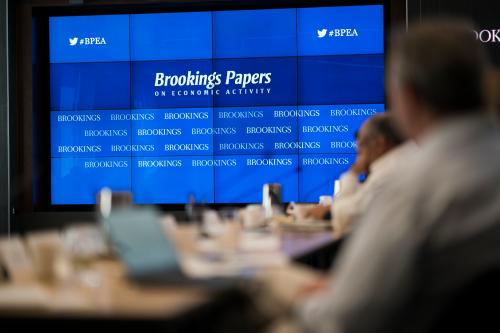This paper is part of the Spring 2018 edition of the Brookings Papers on Economic Activity, the leading conference series and journal in economics for timely, cutting-edge research about real-world policy issues. Research findings are presented in a clear and accessible style to maximize their impact on economic understanding and policymaking. The editors are Brookings Nonresident Senior Fellow and Northwestern University Economics Professor Janice Eberly and James Stock, Brookings Nonresident Senior Fellow and Harvard University economics professor. Read summaries of all six papers from the journal here.
Abstract
In this paper, we examine what groups of children are served by core childhood social safety net programs—including Medicaid, EITC, CTC, SNAP, and AFDC/TANF—and how they have changed over time. We find that virtually all gains in spending on the social safety net for children since 1990 have gone to families with earnings, and to families with income above the poverty line. These trends are the result of welfare reform and the expansion of in-work tax credits. We review the available research and find that access to safety net programs during childhood improves outcomes for children and society over the long run. This evidence suggests that the recent changes to the social safety net may have lasting negative impacts on the poorest children.
Citations
Hoynes, Hilary W., and Diane Whitmore Schanzenbach. 2018. “Safety net investments in children.” Brookings Papers on Economic Activity, Spring, 89-150.
Conflict of interest disclosure
Hilary W. Hoynes is a board member for the California Budget & Policy Center. The authors did not receive financial support from any firm or person for this paper or from any firm or person with a financial or political interest in this paper. With the exception of the aforementioned, they are currently not officers, directors,or board members of any organization with an interest in this paper. No outside party had the right to review this paper before circulation.






